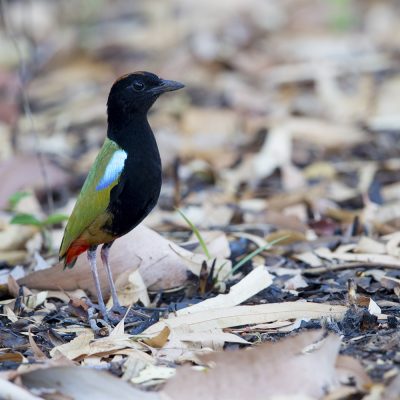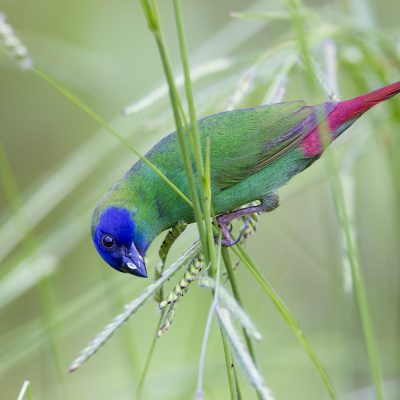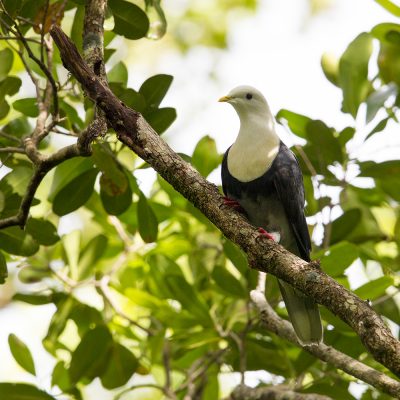FINDING BIRDS AROUND ALICE SPRINGS.
Alice Spring is a mecca for wildlife, most sites are within a day trip of the city, here are just a few.
(Photo left to right – Inland Dotterel, Letter-winged Kite, Crimson Chat, Australian Ringneck Parrot)
ALICE SPRINGS WEATHER
Located just South of the Tropic of Capricorn the town of Alice Springs straddles the usually dry Todd River on the northern side of the MacDonnell Ranges. Alice Springs is located in Central Australia, also known as the Red Centre, an arid environment consisting of several different deserts.
In Alice Springs, temperatures can vary by up to 28 °C and rainfall can dramatically change from year to year. In summer, the average maximum temperature is in the mid 40s, whereas in winter the average minimum temperature can be 5.5 °C. Alice Springs averages 12 nights a year below freezing, it is about 545 metres above sea level which contributes to its cold nights in winter. The highest temperature recorded in Alice Springs was 45.2 °C on the 3 January 2006, while the record low is −7.5 °C, recorded on 17 July 1976. This is also the lowest temperature recorded in the Northern Territory.
Alice Springs has a desert climate with annual average rainfall of 285.9 millimetres but annual rainfall is very erratic, in 2001 741 millimetres fell and in 2002 only 198 millimetres fell. The highest daily rainfall is 204.8 millimetres, recorded on 31 March 1988.
BEST TIME OF YEAR TO SEE BIRDS
The best time of year to visit Alice Springs to see birds all depends on how much rainfall Alice Springs has received. Usually July to October is best as the temperatures are mild and birds are breeding and in full breeding plumage. Between November and March it is extremely hot making birding very uncomfortable for both you and the birds.
OLIVE PINK BOTANIC GARDENS – (Photo above – Western Bowerbird at Bower)
Olive Pink Botanic Gardens is a great first place to visit in Alice Springs, it is famous for its local Western Bowerbirds which have impressive Bowers located in the gardens right near the car park.
Olive Pink Botanic Gardens is also a great place to see species like Spiny-cheeked Honeyeater, Australian Ringneck Parrot, Singing Honeyeater, Yellow-rumped Thornbill, Red-browed Pardalote, Weebill, Grey-crowned Babbler and Galahs.
ALICE SPRINGS SEWAGE PONDS – (Photo above – Black-tailed Native-hen)
Entry into these famous sewage ponds have recently changed, all bird watchers are required to complete the online safety induction and indemnity form HERE. Once the online induction has been completed ALL birdwatchers will be required to contact Tourism Central Australia to arrange a guided tour where access to the site will be granted with one of the accredited guides through Tourism Central Australia.
Their contact details can be found here at www.discovercentralaustralia.com.au or by calling (08) 8952 5800, 1800 645 199 or via email at [email protected].
Single person access is not permitted, a minimum of two fully inducted visitors is required and must be in close contact throughout their visit. You are also required to wear Hi-Visibility clothing (vest or similar), closed in shoes and carry their completed induction certificates and photo identification should they be approached by pond security or Power and Water staff
KUNOTH BORE – (Photo above – Grey Honeyeater)
Access to this site is tricky and entry is at your own risk, please be careful not to disturb cattle, especially near water. The area around Kunoth Bore is Aboriginal Land leased to Hamilton Downs so maybe call ahead if you plan to go in.
Some of the birds that can be seen here are Banded Lapwing, Red-backed Kingfisher, White-winged Fairy-wren, White-browed Babbler, Hooded Robin, Bourke’s Parrot, Mulga Parrot, Inland Thornbill, Southern Whiteface, Red-capped Robin and Splendid Fairywren.
It is also one of the main places you have a chance to see the very rare Grey Honeyeater so keep your eyes peeled.
SANTA TERESA ROAD – (Photo above – Banded Whiteface)
Santa Teresa Road can be very productive right along this road. Here are a couple of areas to have a look at.
Check here (-23.994073, 134.064903) which is known as Bourke’s Parrot Swamp for Bourke’s Parrots, Mulga Parrots and Grey Fantails.
Check here (-23.86567,133.98622) for Mulga Parrot, Yellow-rumped Thornbill and both Banded & Southern Whiteface.
SANTA TERESA ROAD “TYRE IN POLE SITE” – (Photo above – Rufous-crowned Emu-wren)
The tyre in the pole site on Santa Teresa road is one of my favourite places to visit when I’m in Alice Springs, it’s the best place to see Rufous-crowned Emu-wrens, Spinifexbird and Dusky Grasswrens.
Check boths sides of the road in the old growth Spinifex for the Emu-wren and Spinifexbird and the Rocky Gullies and hills for the Dusky Grasswren’s, the trick to finding all of these species is listening carefully for their unique high pitched calls.
SANTA TERESA FARMERS DAM – (Photo above – Bourke’s Parrots)
This site is one of the best places to observe Bourke’s Parrot which come in to drink here, the weird (Or maybe smart) thing about these birds is they come into drink very early and late sometimes in the pitch black! Get to the site about an hour before Sunrise or wait patiently after Sunset. This is private property so entry is at your own risk.
Also keep an eye out for Grey Falcon which has been seen in the area.
ORMISTON GORGE – (Photo above – Spinifex Pigeon)
This beautiful gorge West of Alice Springs is a stunning place to go birding and watch the sunrise, it’s a great place to see Spinifex Pigeon, Pink Cockatoo, Dusky Grasswren, Spinifexbird, Red-browed Pardalote, Variegated Fairywren, Red-backed Kingfisher, Western Bowerbird and maybe even a Peregrine Falcon.
WEST MACDONNELL NATIONAL PARK – SIMPSONS GAP – (Photo above – Dusky Grasswren)
Simpsons Gap; which is the West Macdonnall National Park, is just West of Alice Springs and is a beautiful place to visit and find some amazing birds. Look for Wedge-tailed Eagle, Dusky Grasswren, Gray-headed Honeyeater, Hooded Robin, Inland Thornbill, Gray Fantail, Southern Whiteface, Painted Firetail, Splendid Fairywren, Western Gerygone and Redthroat.
STUART HIGHWAY 20km NORTH OF KULGERA – (Photo above – Cinnamon Quail-thrush)
This area beside the highway is a great place to look for Cinnamon Quail-thrush, look in the low bushes near the road. Also search this area for Orange Chat, Banded Whiteface, Bourke’s Parrot and Inland Dotterel.
Please keep to the roadside as over the fence is private property.
SANTA TERESA ROAD TOWARD OLD ANDADO – (Photo above – Pied Honeyeater)
Follow Santa Teresa Road South East toward Old Andado Station, if the area has had a large amount of rain this area can be incredible for birding. Look for flowering Eremophila, if you find them in blossom there is a high chance Black and Pied Honeyeater are hanging around.
Other birds to look out for along this road are Crimson Chat, White-browed Babbler, Crested Bellbird, Cinnamon Quail-thrush, Banded Whiteface and Southern Whiteface
ANDADO TRACK – (Photo above – Eyrean Grasswren)
The sand dunes near the Mac Clark conservation reserve are home to one of Australia’s coolest and most characterful birds, the Eyrean Grasswren. These very entertaining birds live on the large red sand dunes and aren’t too hard to find, photographing one is a different story! The key with these Grasswrens is to sit patiently, they will usually come to you.
MAC CLARK CONSERVATION RESERVE – (Photo above – Inland Dotterel)
The amazing Gibber Plains can again be very productive if the area has had rain, look for Gibberbird, Orange Chat, Inland Dotterel, Australian Pratincole and if you lucky one of Australia’s rarest birds the Letter-winged Kite which are all known to breed in the area.
ULURU – (Photo above – Sandhill (Striated) Grasswren)
The Sandhill Grasswren, which is part of my favorite family of birds, can be found near the famous Uluru. Look around the North side of the Sunset car park and listen out for their high pitched calls. Remember it is illegel to leave marked trails in the National Park.
BARROW CREEK – (Photo above – Major Mitchell’s Cockatoo)
A few hundred kilometres North of Alice Springs is a little know birding hot spot, Barrow Creek. Make sure you have a look around as I have found some amazing birds including Dusky Grasswren, Grey Falcon, Ground Cuckoo-shrike, Rufous-crowned Emu-wren and the amazing Major Mitchell’s Cockatoo’s which usually hang around the area.
If you have used one of my guides please do me a favor and click the link below to review me on Trip Advisor and Google, it helps me out a lot.

















